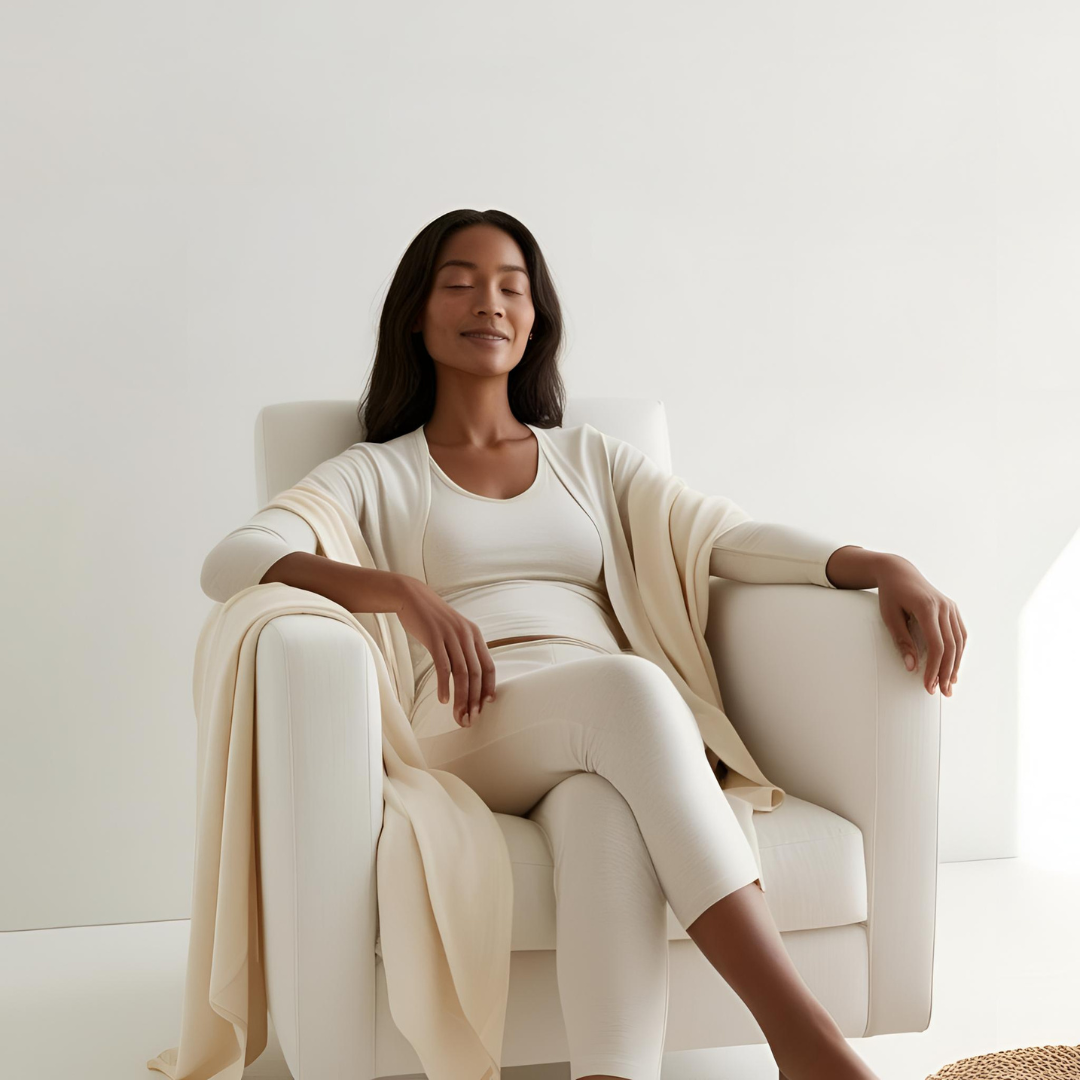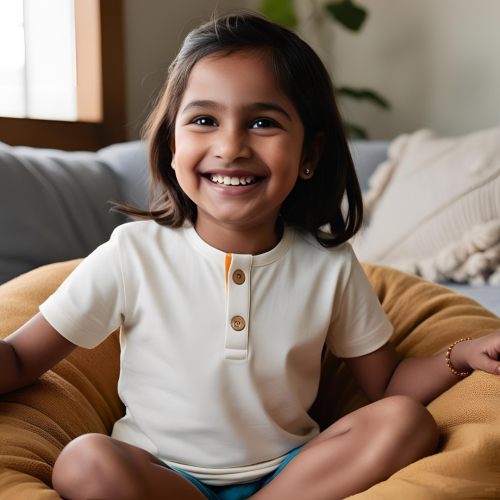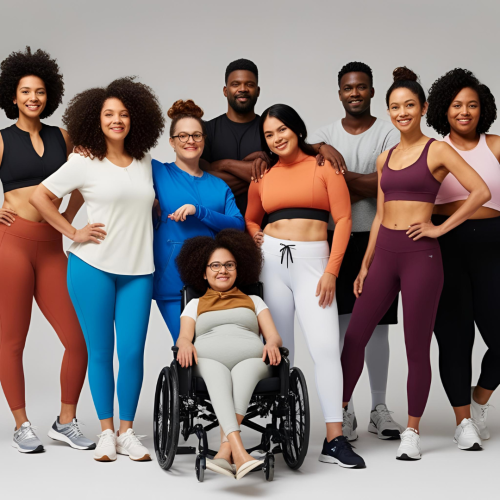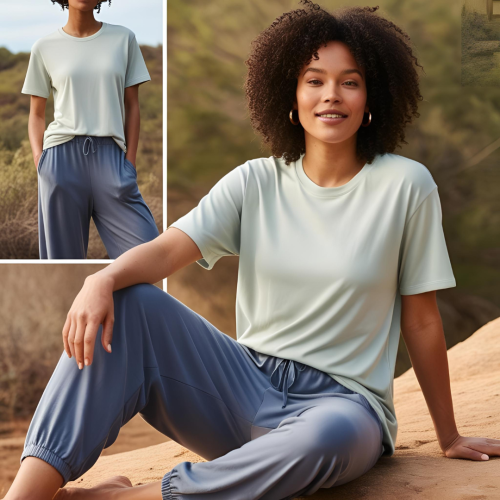In today’s fast-paced world, finding comfort and well-being in small daily choices has become essential. One of those choices is closer than you might think: the clothes we wear. When crafted with the right materials and thoughtful design, fashion can literally embrace the body—and the mind.
The growing demand for calming fabrics, gentle cuts, and clothes that respect body sensitivity reflects an important shift: dressing is no longer just about style—it’s also about personal care and emotional balance.
Why Do Some Clothes Feel Calming?
Our bodies are covered in nerve endings and touch sensors. Stimuli such as heat, friction, or rough textures can easily trigger discomfort—especially in individuals with sensitive skin, fibromyalgia, autism, or ADHD. But even people without such conditions can feel the effects of stiff fabrics or badly placed seams.
So when we talk about “clothes that hug,” we mean garments that provide lightness, a soft touch, freedom from irritation, and a sense of emotional safety. They help the body relax, encourage deeper breathing, and can even uplift your mood.
The Power of Organic Cotton
Among all natural fabrics, organic cotton stands out as one of the most comforting. Grown without pesticides and processed with eco-friendly methods, it preserves the natural softness of the fiber and avoids chemical treatments that can irritate the skin.
Clothing made with organic cotton is soft, breathable, and thermally balanced. That means it keeps you cool in the heat and warm in the cold—without causing excess sweat or itchiness. Perfect for sleeping, relaxing, yoga, or simply getting through the day in peace.
Bamboo: Softness Meets Sustainability
Another fabric gaining recognition for its calming properties is bamboo. Naturally hypoallergenic and antibacterial, bamboo fabric has an even smoother texture than cotton. Plus, bamboo grows quickly and uses little water, making it an eco-conscious choice.
Bamboo clothing is ideal for people with eczema, allergies, or sensitive skin. Its silky feel helps reduce itching and inflammation while creating a cooling, soothing effect. T-shirts, pajamas, and underwear made from bamboo are like a gentle hug for your skin.
Tagless Fabrics: Small Details, Big Relief
Have you ever bought a beautiful piece of clothing only to find it unbearable because of an itchy tag? This is one of the most common triggers of discomfort—especially for children, autistic individuals, or those with tactile hypersensitivity.
The solution lies in tag-free clothing. Some brands print size and care info directly onto the fabric or use removable stickers. This simple adjustment eliminates friction with the skin and makes wearing clothes a much more peaceful experience.
Gentle Seams and Ergonomic Cuts
Seams are another critical factor in calming clothing. Thick seams in high-contact areas like the shoulders or waistband can be distracting or irritating throughout the day. Flat seams, reversed seams, or seamless designs offer maximum comfort.
Cut and shape matter too. Loosely tailored, ergonomic fits made with stretchy materials allow clothes to move with your body. This creates a sense of constant, comfortable pressure—almost like a soft, lasting hug.
Light Compression: A Gentle Embrace
Some clothing offers a touch of compression—mild, targeted, and carefully designed. This is especially helpful for people who feel more secure when gently “held” by their clothes. Think of shirts, vests, and leggings that offer support without being tight.
This gentle compression can activate the parasympathetic nervous system, which triggers a relaxation response. The result is improved focus, lower anxiety, and a general sense of calm. It’s a technique used often in sensory therapy for neurodivergent children.
Dressing as an Act of Self-Care
Choosing clothes with calming fabrics is an act of kindness toward yourself. In a world that demands constant performance, wearing something that brings peace can be a quiet invitation to slow down and breathe.
Even in formal or professional settings, you can incorporate calming clothing: a soft cotton shirt under your blazer, seamless undergarments, or garments made from natural fibers—all of these contribute to daily comfort and emotional well-being.
Calming Clothes for Every Age
This type of clothing can benefit:
- Babies and young children: who are still developing sensory tolerance
- Elderly individuals: with thinner, more sensitive skin
- People with autism, ADHD, or fibromyalgia: who may experience sensory overload
- Pregnant women: seeking comfort during body changes
- All of us: because everyone deserves to wear peace
Fashion as a Way to Feel
We are entering a new era of fashion—one where what we wear is not just about what others see, but how we feel. Natural fabrics, gentle cuts, calming colors, and mindful design offer more than comfort—they offer empathy, care, and presence.
Adopting clothes that hug is a way of valuing your body and your relationship with the world. It’s a simple choice, but one with profound impact on your routine, sleep, productivity, and—most importantly—your emotional state.





